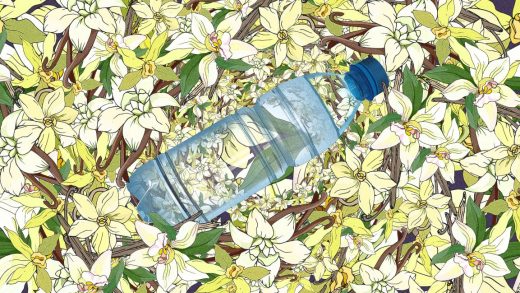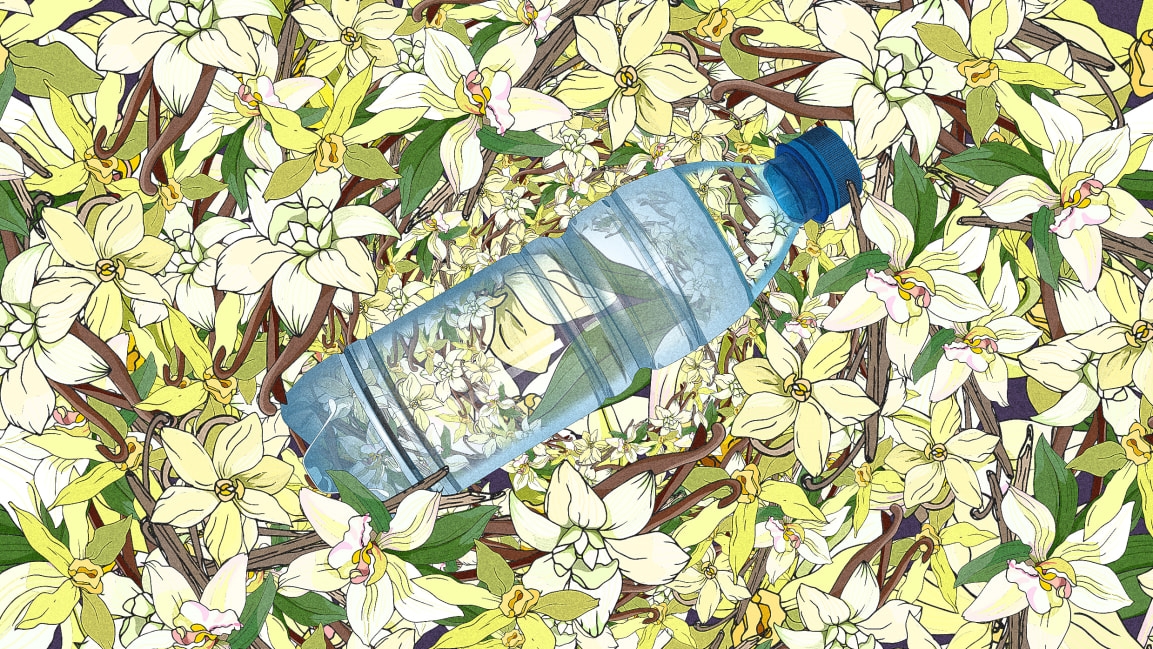Scientists just turned plastic bottles into . . . vanilla flavoring?
Right now, that plastic water bottle you toss after one use could have a second life as a pair of shoes, a piece of clothing, an asphalt road, or even a house. And in the future, those bottles could be turned into something sweet that you eat or smell—one of the many items that contains vanillin, the main chemical compound in vanilla.
Researchers at the University of Edinburgh in Scotland have found a way to turn post-consumer plastic—those plastic items that have been collected for recycling and cleaned—into vanillin using E. coli bacteria. Vanillin is the main flavor component of vanilla beans, and can be natural or, as in this case, synthetic.
Synthetic vanillin, which is actually more common than natural vanilla extract, is used in everything from food to pharmaceuticals to cosmetics. It’s also been made out of everything from coal tar to wood pulp waste to cow manure, so plastic may not be too strange or unpleasant of a source in comparison—but it’s one that could have a big impact on our plastic pollution problem, and put us on a path to a more circular economy.
“This is the first time that biology has been used to transform plastic waste into a high-value molecule like vanillin, and paves the way for many more exciting studies to establish this new field,” says Stephen Wallace, a lecturer of biotechnology at the University of Edinburgh and principle investigator of the study on this plastic-derived vanillin recently published in Green Chemistry. “It could help to address the plastic problem by providing ways not only to recycle plastic, but to turn it into something more valuable than the starting material.”
Wallace says researchers intentionally set out to create vanillin because it’s “used so widely and is a great way to demonstrate the potential of using plastic as a feedstock.” The focus was on using plastic from water bottles, but since that’s a common plastic used for food packaging and even fabrics, it would be easy to apply the process to other materials.
That process starts with degrading polyethylene terephthalate, commonly known as PET plastic, into its components, terephthalic acid and ethylene glycol (this is also done when chemically recycling plastic). Then, a microbial fermentation process utilizing the E. coli bacteria turns the terephthalic acid into vanillin, with a 79% success rate, the researchers report.
The demand for vanilla is growing. In 2018, the global vanilla market was valued at $510 million; by 2026, it’s expected to reach $735 million. At the same time, plastic waste keeps piling up. By one estimate, North America alone produces 3 million tons of PET waste per year. Turning some of those plastic bottles and food packaging containers into vanillin is a step toward a circular economy.
Further research is needed to see if the vanillin is pure enough to be consumed, and another next step, Wallace says, is about making the process more efficient, so higher yields of vanillin are produced more quickly. “After that,” he says, we are certainly keen to scale up the process and explore opportunities for commercialization.” And in the future, your vanilla-scented perfume or vanilla-flavored ice cream could help rein in our plastic pollution problem.
(36)



